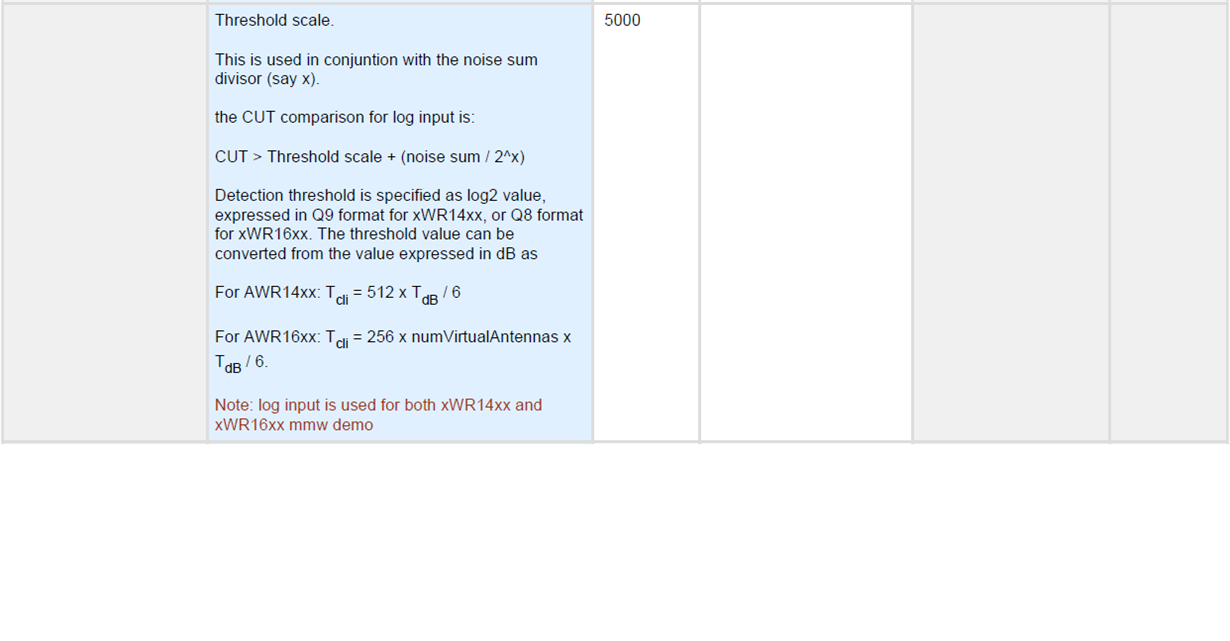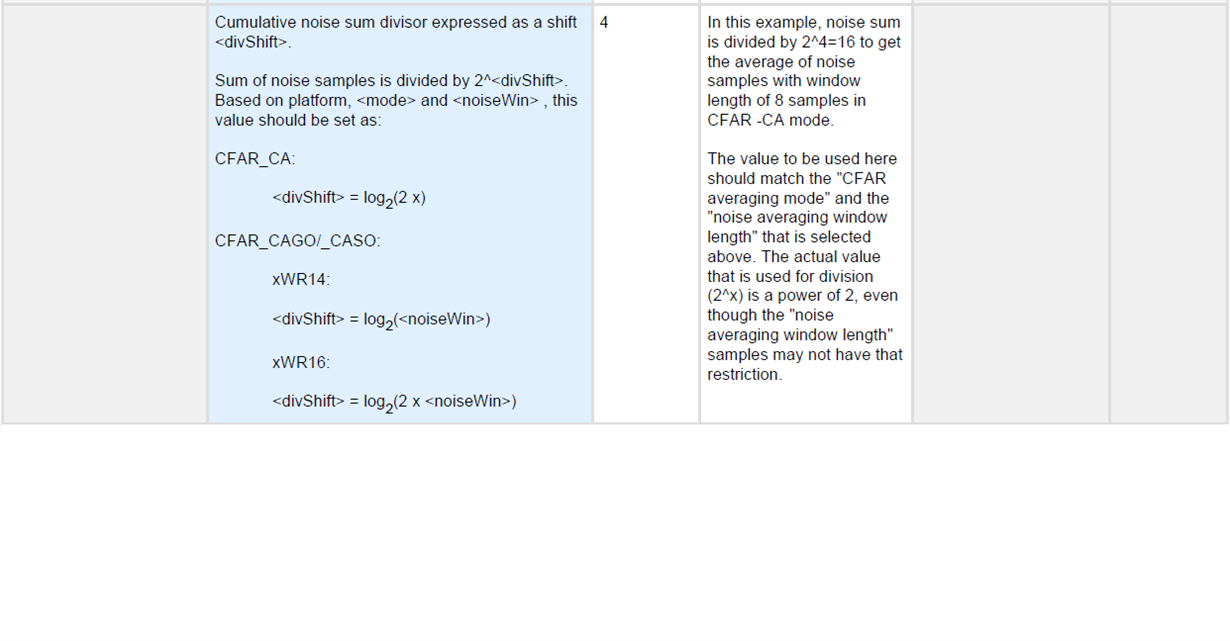Hi,
I would like to know how to calculate the proper value for the "noise sum divisor" and the "threshold scale" in cfarCfg based on the parameters:
numRxAnts
numTxAnts
numRangBins
numDopplerBIns
Another question is, how will those two parameters affect the detection results. According to my experiments, I will have more objects detected when I reduce the value of threshold scale but have more fake detections. Is my understanding correct? Is there a way to reduce the rate of fake detections?



